* (enlarged/restored)
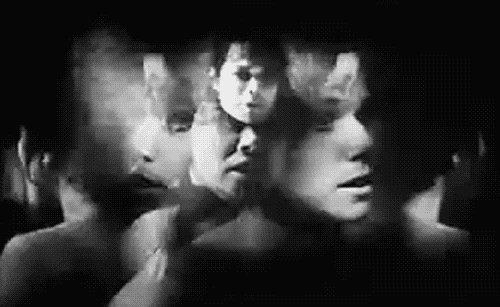
‘The immersive experience of Peter Tscherkassky films is marked by a collapse between the world of the frame, and the mechanics of filming and projection. It is as if Tscherkassky is suggesting that there is a potential violence restrained by every film frame. An explosion of off-screen energy that can shatter the veneer of the film form. The expression of this shattering is a deeply sensual experience which implicates and surrounds the viewer. The constant layering of images also creates a space in which the viewer is able to insert themselves, no longer withheld by the pretense that this is a separate world presented on screen. Rather, it is something immediate and tangible which can be destroyed in the act of viewing, and then created again in an abstract rhythm of torn sound and image fragments. This is not simply an act of subversion, but something like the fractured cut and paste ethics of avant-garde composers; a mode of using the violent rhythms of delay, rupture, fragmentation, looping and degraded image and sound. It is a style more aligned with the abstract cut and paste density of contemporary musicians such as Kid 606 and Matmos than the careful superficiality of most cinema.
‘Tscherkassky’s films have always been a meeting point of cogent theoretical preoccupations and a kind of anarchic punk energy. His first explorations in film were an inspiration and inheritance propelled by the films of Kurt Kren, Peter Kubelka and the Vienna Actionists. Although one of his earlier super-8 films, Aderlass (Bloodletting – 1981) took the confronting performances of the Actionists as its model, it was Kren and Kubelka’s concern with the materiality of film that would continue to inform his own work. In works such as Urlaubsfilm (1983), Freezeframe (1983), and Manufraktur (1985) Tscherkassky is interested in the limits to which film can be subjected to degradation and dissolution via refilming, layering and imposition, and visual fragmentation. But the rhythms of fracturing the sound and image are so precise as to never appear random. Commonly, as in Outer Space, Tscherkassky begins from a state of calm – a black or white screen, or a coherent piece of found footage – which he then takes to the edge of absolute destruction via processes of degradation and splintering, only to return the viewer to a state of calm, their senses bombarded with a new awareness of the possibility of film. These works are a frustrated resurrection of the material which has been placed at the service of the staid traditions of narrative language and conventions. Roman Jakobson wrote that “in order to show an object, it is necessary to deform the shape it used to have” and this is precisely Tscherkassky’s concern.
‘Another defining element is his use of found footage, from the work of the Lumiére Brothers to home movies and studio melodramas or horror films. The use of previously existing source film is increasingly common to artists whose devotion to the medium is as much a reaction to the prevailing artistic climate as it is a continuation of a century of cinematic experimentation. Tscherkassky himself expressed the revival of found footage filmmaking as a “response. from a technological standpoint, to the overwhelming presence of electronic imagery: a conscious return to the artistic specificity of the medium’s historical expression.” Other artists in the influential Austrian avant-garde scene such as Lisly Ponger, Dietmar Brehm and Gustav Deutsch – many of whose works are supported and distributed by Sixpack Films, an organisation Tscherkassky founded a decade ago – are similarly intrigued by the meeting point between the materiality of film and its history as an aesthetic form. Indeed, some of Tscherkassky’s work borders on a reverence for the history of film as a plastic material. Motion Picture (1984) is a visually bizarre but theoretically intriguing film in which Tscherkassky laid out foot long strips of film in a grid. Upon this grid he then exposed a still image from the very first piece of film ever exposed: the Lumiére’s La Sortie des Ouvriers de l’usine Lumière à Lyon (1895). The result was that tiny divisions of the black and white image exposed each frame, and the projected film was like a binary map of strobing light, meaningless without the idea behind it. To some a film should speak for itself, but for Tscherkassky the presence of the filmmaker and the traces and resonances of their production is a defining element of avant-garde cinema. The manual processes of production should not only remain undisguised but should be brought to the fore so that the filmmaker and viewer meet actively, redefining and reassembling the manufactured splinters of the filmmaking process.
‘There is little doubt that the filmic work of Austrian Peter Tscherkassky is confounding. This is not because it is fundamentally abstruse in its meaning or avoids placement within a context of cinematic practice. Tscherkassky distils his theoretical concerns into bold but specific statements about the medium and the manufacture of film. And his films develop on modes of expression that can be traced within a recent history of structural and avant-garde film practice. Tscherkassky’s films are confounding because on the one hand, they can be explosively violent ruptures of the usual artifice of cinema, and on the other, they are sensually overwhelming, seductive experiences to which it is very pleasurable (and often physically staggering) to surrender to. And, they confound, because, in this very act of surrendering to the image, one is working against one of Tscherkassky’s primary concerns, which is to explore and expose the limits of the physical and intellectual mechanisms that constitute “film”.’ — Senses of Cinema
____
Stills

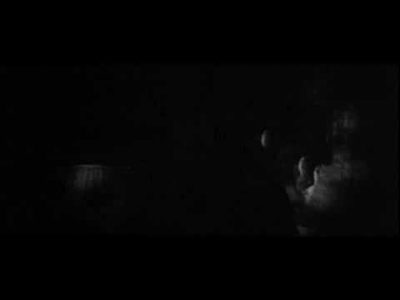
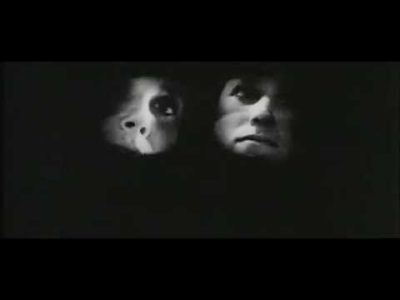

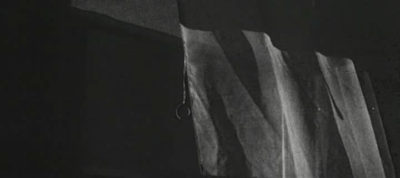
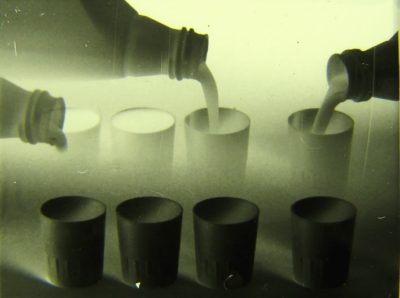

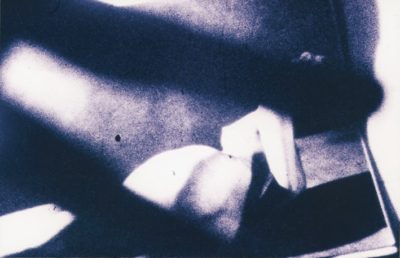
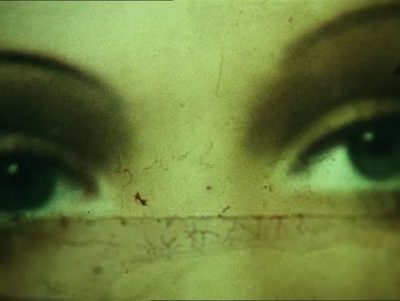
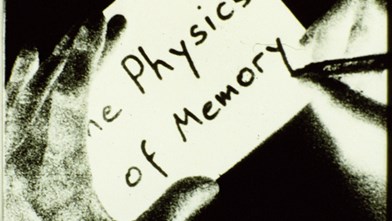



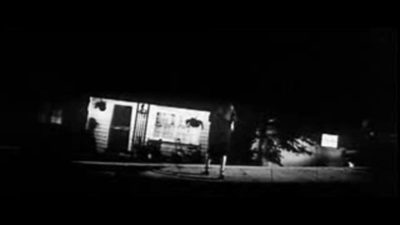
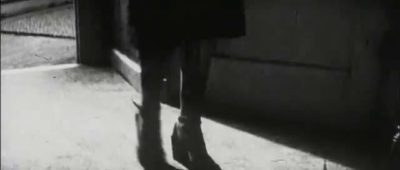
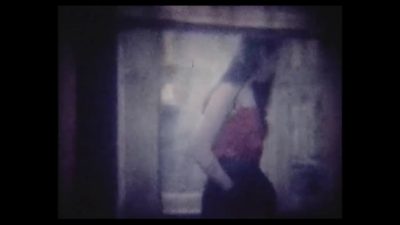
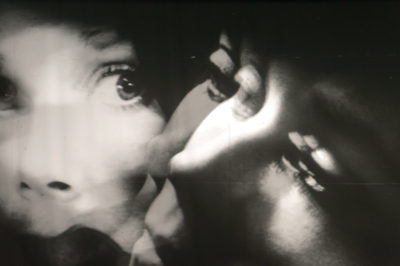
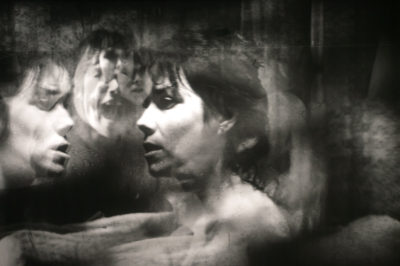
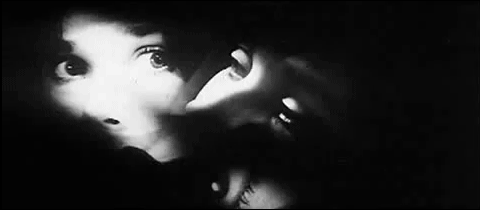
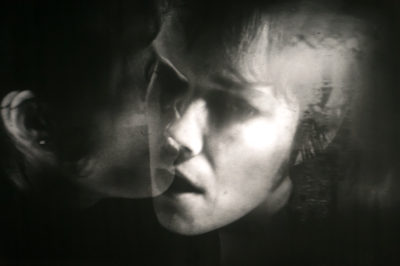

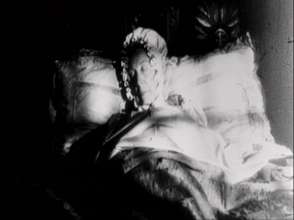
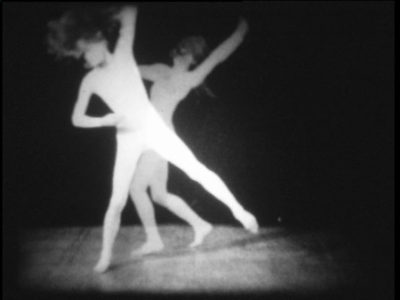

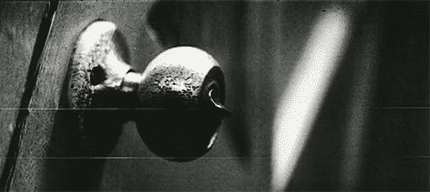
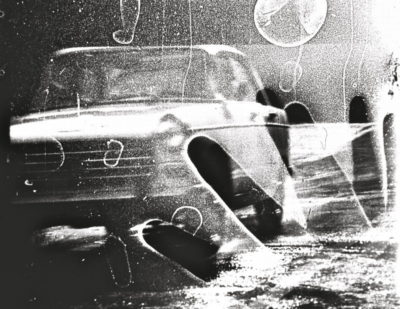
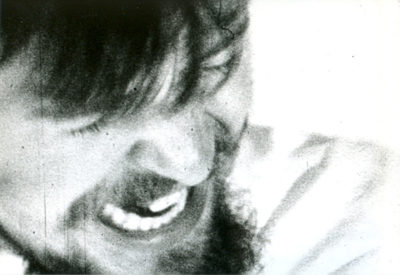


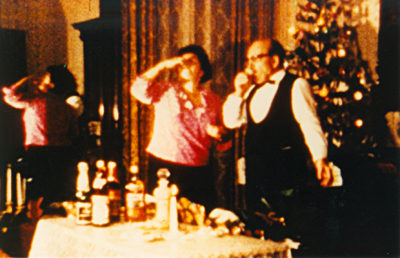
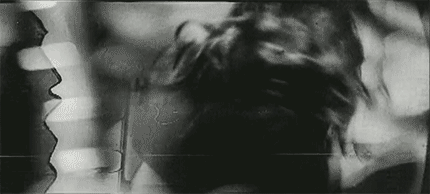
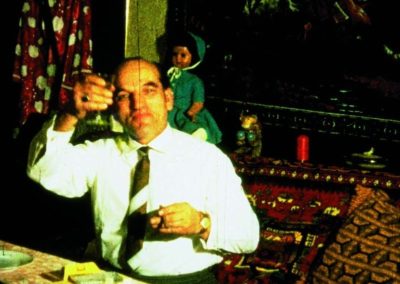
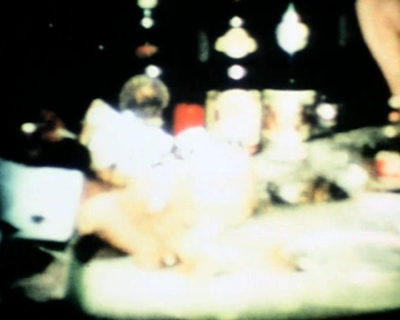


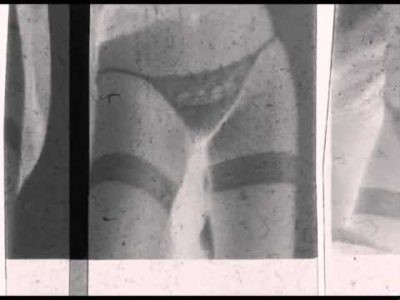

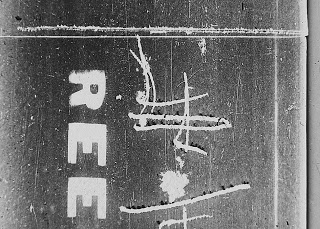
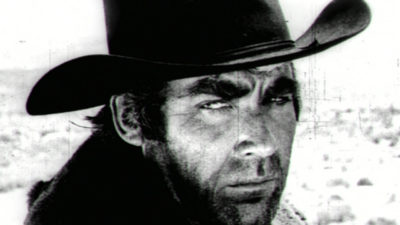




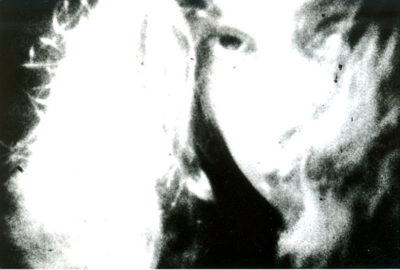
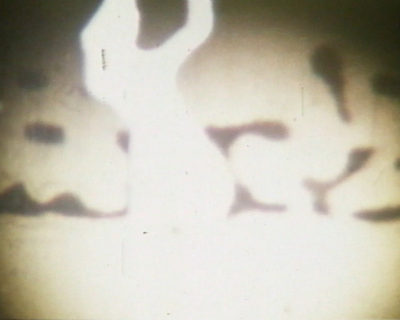
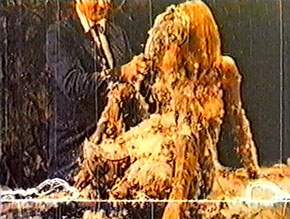
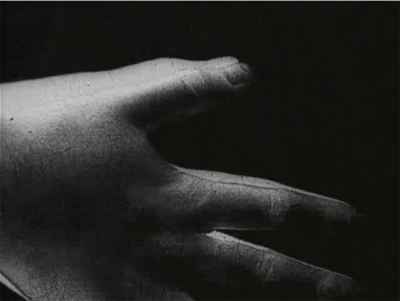
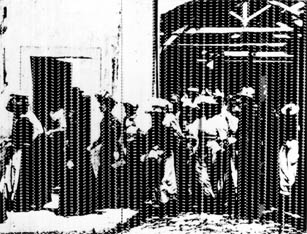

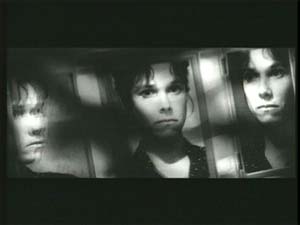
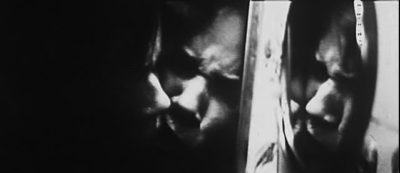
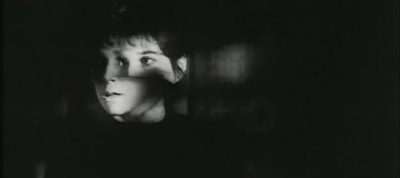
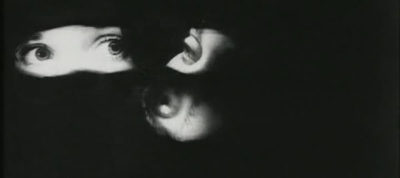
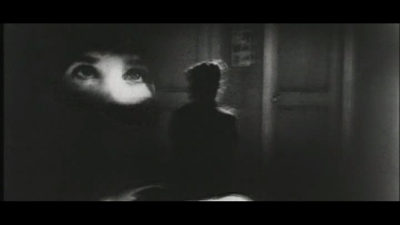

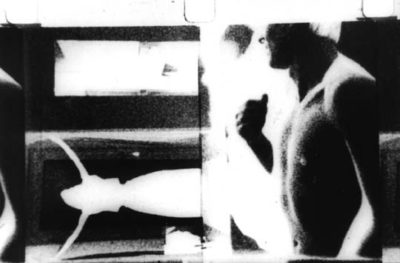
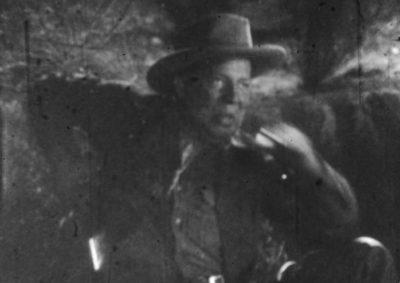
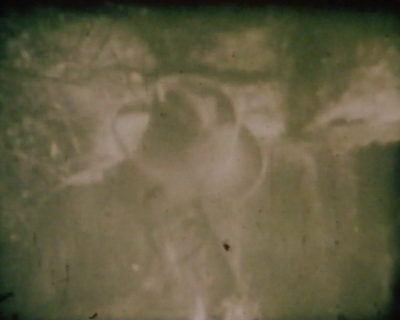
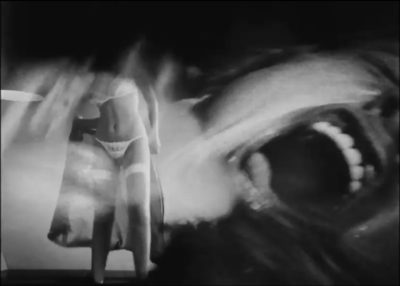
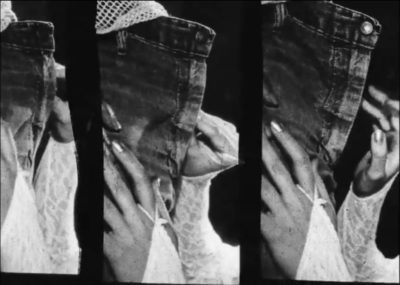
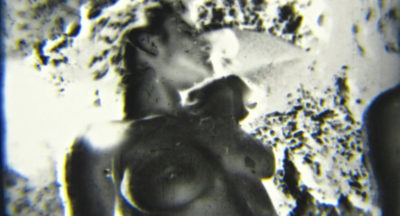
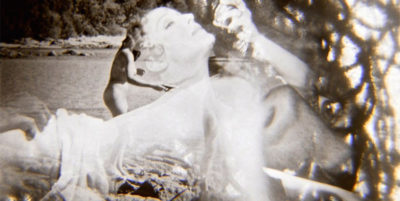
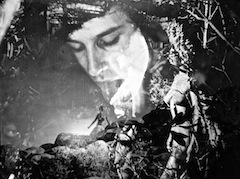
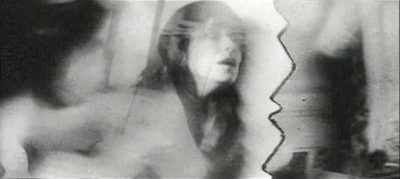
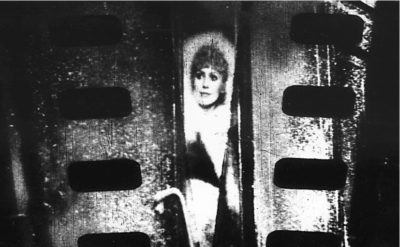

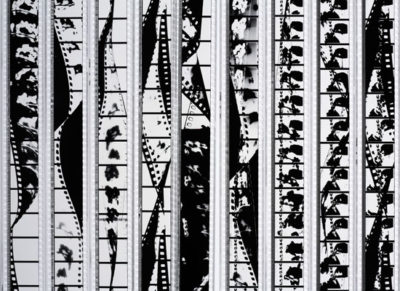


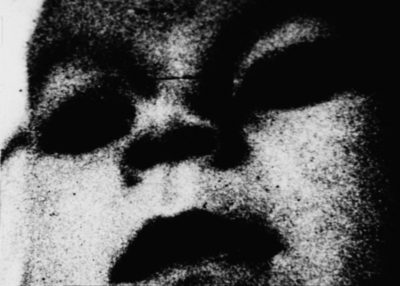


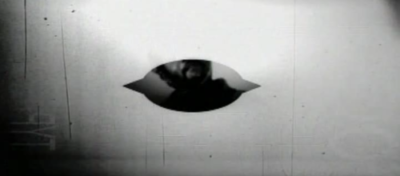
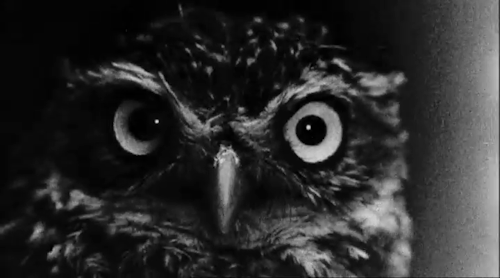
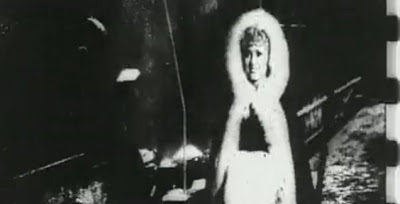
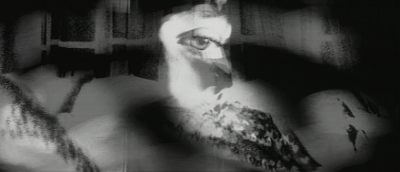
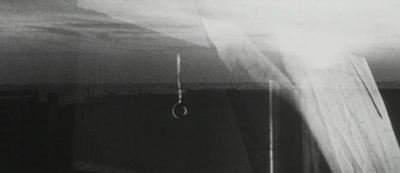
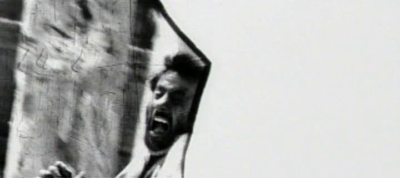

____
Further
Peter Tscherkassky Website
Peter Tscherkassky @ IMDb
PT @ sixpack film
The Exquisite Corpus (Peter Tscherkassky, Austria)
Attacked by Nothing: Barbara Hershey and The Entity in ‘Outer Space’ and ‘Dream Work’
How Peter Strickland Discovered Peter Tscherkassky
PT @ Light Cone
The Perceptive Fracture. Peter Tscherkassky’s Films from a Dark Room
Anacinema: Peter Tscherkassky’s Cinematic Breakdowns
TSCHERKASSKY, ROBINSON, OREILLY: THREE PERSPECTIVES ON MEDIUM AND ITS MEANINGS
CONVULSIVE DREAMING: THE FILMS of PETER TSCHERKASSKY
Mechanical Ghosts On The Run: Peter Tscherkassky
Austrian experimental filmmaker Peter Tscherkassky has the most bizarre working method I’ve come across.
PETER TSCHERKASSKY: MAESTRO DEL METRAJE ENCONTRADO
Peter Tscherkassky. Figuras en vibración.
___
Media
Peter Tscherkassky: Cine-lecture “Strictly Handmade”
Cinémas de traverse (excerpt) – Peter Tscherkassky interview
Masterclass: Peter Tscherkassky
_____
Interview
from DIGICULT

Marco Mancuso: I would like to start from your last work Coming Attractions, winner at 67th Venice Film Festival in the “Nuovi Orizzonti” section. Can you tell me something about the idea of the project and its relationships with your previous films? Expecially regarding the references to early days cinema, to the “attractive” dimension of cinema that is clear in this film even from the title, but that is clear and present in all your production…
Peter Tscherkassky: Well, about the relationship between Coming Attractions and my earlier films: If you view the entire CinemaScope trilogy and Instructions for a Light and Sound Machine there’s a lot of violence, it’s like a massive impact. For my subsequent project I deeply longed to do something different: a kind of comedy, a lighter hearted movie. When I viewed these wonderful commercials that had fallen into my hands, I knew they could provide the basis for such a new film. As to the connection between early cinema and the avant-garde in Coming Attractions, please see my homepage. There you can read a short text answering exactly that question
Marco Mancuso: Always speaking about Coming Attractions. It has been produced with Eve Heller. Together, you introduced the movie at the beginning of April, within the program of IX Magis Spring School / Film Forum organized by DAMS-Udine University. Can you tell me more about your collaboration?
Peter Tscherkassky: Up until now I produced my dark room films from the first to the last frame with a precise score as to the sequences and overall shape of the film. After generating this material in the darkroom, very little subsequent editing was required literally just a few hours. With Coming Attractions I took a different approach. I generated a great deal of material in the darkroom on the basis of extremely repetitive commercial takes and it was only after this phase that I got down to editing and shaping the material with the assistance of fellow filmmaker Eve Heller, who also happens to work with found footage.
She was able to view my material with the unbiased eye of someone who had not been immersed in it for over two years, and this perspective was extremely helpful. Also, as an avant-garde filmmaker herself, she has a fine sense of visual rhythms and sense of the significance of each individual frame. We were able to work on the fine cut of the film with a fast and deep mutual understanding. She also contributed to a few ideas that we ended up using for the soundtrack that was created by Dirk Schaefer.
Marco Mancuso: If you reflect upon Coming Attractions and you look back to your previous artworks for a moment. Can you maybe observe a sort of path, a development from your early works to the latest ones, in terms of use of found-footage as a tool? I mean, did you feel that the development of languages, contaminations, new technologies, formats, influenced you in some way in the use of this instrument?
Peter Tscherkassky: Basically, with each of my darkroom films I’ve developed further skills when it comes to manipulating the found footage, contact printing using different light sources, selecting imagery and initiating new ways of combining different source materials. Take a look at my first “pure” found footage film made in the dark room entitled Manufracture, which can be found on my DVD Films from a Dark Room (on the Index label). I think it’s a film I don’t have to be ashamed of, but it lacks the semantics. After I made that film I started to have a growing interest in “stories”, in tales to be told, and accordingly proceeded to develope narrative strategies.
As to the last part of your question, I would say that I am influenced by new technologies, and formats, however ex negativo: These forms are not just new and “innocent”, but were designed to replace analog film and analog film as a medium of fine art cannot be replaced by digital technologies since the materiality of the two media are completely different and have nothing to do with one another. I decided to make work that illustrates and celebrates the qualities of analog film which cannot be replaced by non-analog media.
Marco Mancuso: The avant-guard film making has been always considered iconoclastic. As you always pointed out, “the avant-guard authors work on an investigation of the actual image, whose reality must be created within that image itself”. Avant-garde filmmakers underlined the artificial qualities of the medium in their work and deprived the cinematographic image of its own identity, always working with technologies that have become electronic in the last decades.
So, what do you think about the contemporary (even digital or not, I don’t care) audiovisual production? Don’t you find a sort of parallelism, just after the big phenomena of found-footage that inspired a lot of contemporary production & performing practices, with avant-guard movements in terms of iconoclastic detachment from the actual image, considered more as a territory of aesthetical and technical analysys?
Peter Tscherkassky: To be honest, I am not familiar enough with more recent developments within the electronic and digital avant-garde to answer these questions. But from what I’ve seen and from what I know both as to the works and intentions behind them you are absolutely right. There seems to be a strong tendency towards abstraction, and if we choose to call that “iconoclastic”, we have a new sort of iconoclasm at work.
Marco Mancuso: You started working with Super 8 technics, that your recognized as “a microscope which allowed us to see beneath the skin of reality and make the internal lives of images visible in a way that was not possible with any other format”. All your efforts in terms of working with graininess, resolution, manifacturing, expressionism of shadows and lights, were always pushed towards a feeling of destruction, ruininess, pathos, expression; this happened to you, in those years in which “immaterial” media – video and computer-generated images – were considered the new central issue.
If you could imagine a new technology tomorrow, not even digital or virtual, in which direction would you like it could enpower the voyeristic and reality observation potentialities of super 8, 16mm and 35mm technologies?
Peter Tscherkassky: My work is deeply engaged with exploring the materiality of the medium. In this sense I cannot answer to how I would work with an imaginary medium of the future that has no specific qualities I can forsee. I need the friction of material limitations to generate my ideas.
Marco Mancuso: In many of your film works, you make use of what you called “the physics of seeing”. I’m very much interested in this psychological aspect of your movies, in the idea that a physical stimulus can lead the viewer to ask himself some questions about what he/she has seen. The sequence of the images in your movies, the almost solid use of the flicker, the assaulting use of shadows and lights, are tools that you use to go deep inside this research. I wonder why you never tried to explore the world of physical immersive audiovisual installation, to enrich the physical/psychological duality of your works. Is there any particular reason?
Peter Tscherkassky: No, not really. Let’s put it this way: Until now I have been interested in projected film. In the case of my dark room films I have used 35mm film, most often CinemaScope. In my opinion, as far as the art of moving images is concerned, this is the most powerful tool I can access and use to produce work on a really low-tech-level. And when I say “low-tech”, I mean it. You can’t imagine how low my technical level is when I make my films! As a consequence I don’t need a producer, I don’t need a big budget, I don’t need technicians, I don’t need to bother to find a space where I can set up an installation, I don’t have to take care of the presentation of the work, AND SO ON.
All I have to do is to find enough time and mental space to make my film. When I’m finished, I place it in the care of my distributors and my part is done. I see and experience my position in this regard as wonderfully privileged. This is not to rule out the possibility that the day may come when I have an idea, a concept, or a truly thrilling invitation to set up an installation and I take it on. And no doubt the specific physiological aspect of the context will be pivotal to that installation.
Marco Mancuso: Also sound, has a very important role in your films. A landscape which is always present on a primary level, always connected with rythm and impact of images. How did your inteterests in contemporary and electronic music and musicians influence you in terms of the sound scripts of your films? Did you try to develope some ideas or inputs you received from your listenings and studies of the past?
Peter Tscherkassky: I’ve always listened to contemporary music, ever since I got to know it at school at the age of 18. And I’ve always had a particular interest in Musique concrète in both of its forms: the early, “truly” concrète compositions, like those by Pierre Schaeffer and the early Pierre Henry, but also in its later form as electronical music, mainly developted by the Groupe de Recherches Musicales (GRM) at IRCAM in Paris. To me it seems quite natural to try to combine my love for that specific music with my own films. But I’ve also used popular music like the Annie Cordy hit (in Happy-End), or Greek folk music (in Kelimba).
And of course I created “optical” sound tracks in the dark room, as in the case of L’Arrivée, Outer Space and Nachtstück (Nocturne). It has always been a truly challenging and rewarding experience to work with sound, and I am totally bent on more further experimentation in this regard. Besides, I’ve loved to cooperate with musicians and composers like Armin Schmickl, Kiawash Saheb-Nassagh and above all, with Dirk Schaefer who composed the soundtrack for Instructions and Coming Attractions.
Marco Mancuso: The use of found-footage is functional for you to show your idea of using film techniques to explore the notion of “film as a mirror” of reality. It always seemd to to me a very political and antagonist way to be an artist: this tense to transmit a sort of audiovisual energy to the viewer, it’s a very strong political act to me. From your first experiences and reference to Kubelka and the other Vienna Actionists to later use of violent rhythms of delay, fragmentation, looping and degraded image and sound, abstract cut and paste density, how your attitude to be a political film maker has been changing in the last years?
Peter Tscherkassky: I would say that every advanced art and art form has a tendency towards “enlightenment”, since to be understood and appreciated it needs an “enlightened” or at least open minded audience, with a willingness to reflect upon one’s own systems of understanding, of how we perceive and decode the world. I doubt that this makes me a “political” artist in the sense we normally use to consider that notion. But hopefully I’m a political artist in the way Theodor Adorno would describe it.
Marco Mancuso: The CinemaScope trilogy and also Instructions for a Light and Sound Machine were presented at Cannes Film Festival in 2002 and 2005. Moreover, in 2010 Coming Attractions won at the 67th Venice Film Festival. So, which is your approach to cinema industry or mainstream festivals?
Peter Tscherkassky: Well, speaking of “political filmmaker”, I would say that it is not my approach to mainstream festivals that has changed much over the years but perhaps the attitude of the industry itself has: I still don’t want to be part of the cinema industry or commercial cinema, but I do want my films to be shown and it seems as if mainstream festivals are increasingly into my project they invite my films, screen them and sometimes their juries give them awards.
And as long as I don´t get the feeling that this is corrupting my work, it’s fine with me. Of course these invitations have a strong side effect: they draw the attention of a wider audience towards the work of the avant-garde, so it really helps to spread the idea of a form of cinema that is not commercial, a form of counter-cinema.
_______________
11 of Peter Tscherkassky’s 22 films
_____________
Manufraktur (1985)
‘While engaged in a process of deconstruction, Peter Tscherkassky also recognizes the power of cinema, utilizing its control over space and time, in order to uncover the energies of motion and story, of the violence inherent in both revolt and containment. As the materials of the moving image now undergo transformation, as the very term film perhaps become anachronistic, his films make clear that a radical cinema does not simply fetishize the material that filmmakers work with, but rather interrogates those materials and forms for the energies they contain and the meanings they can liberate, through the labor and processes which the maker and the viewer participate in. The future is still arriving, even as the past is constantly being restaged and reinvented within the dark rooms of motion pictures.’ — Tom Gunning
_____________
Shot – Countershot (1987)
‘Not a stage direction, but rather something very concrete is hidden behind the technical term. Something which betrays a little of the yearning for intelligent and playful dealings with the medium of short film.’ — Marli Feldvoss
_____________
Tabula rasa (1989)
‘The target of Tabula Rasa is the heart of cinema. Voyeuristic desire as the pre-condition for all cinema pleasure is at stake here. What Christian Metz and Jacques Lacan have established in theory is rendered as film in Tabula Rasa. At the beginning we can recognize only shadows from which the picture of a woman undressing herself hesitantly emerges. But exactly at the point when one believes one can make out what it is, the camera is located in front of the object. Tabula Rasa takes distance, the fundamental principle of voyeurism, in so far literally, as it shows us the object of desire but continually removes it from our gaze.’ — Sixpack Film
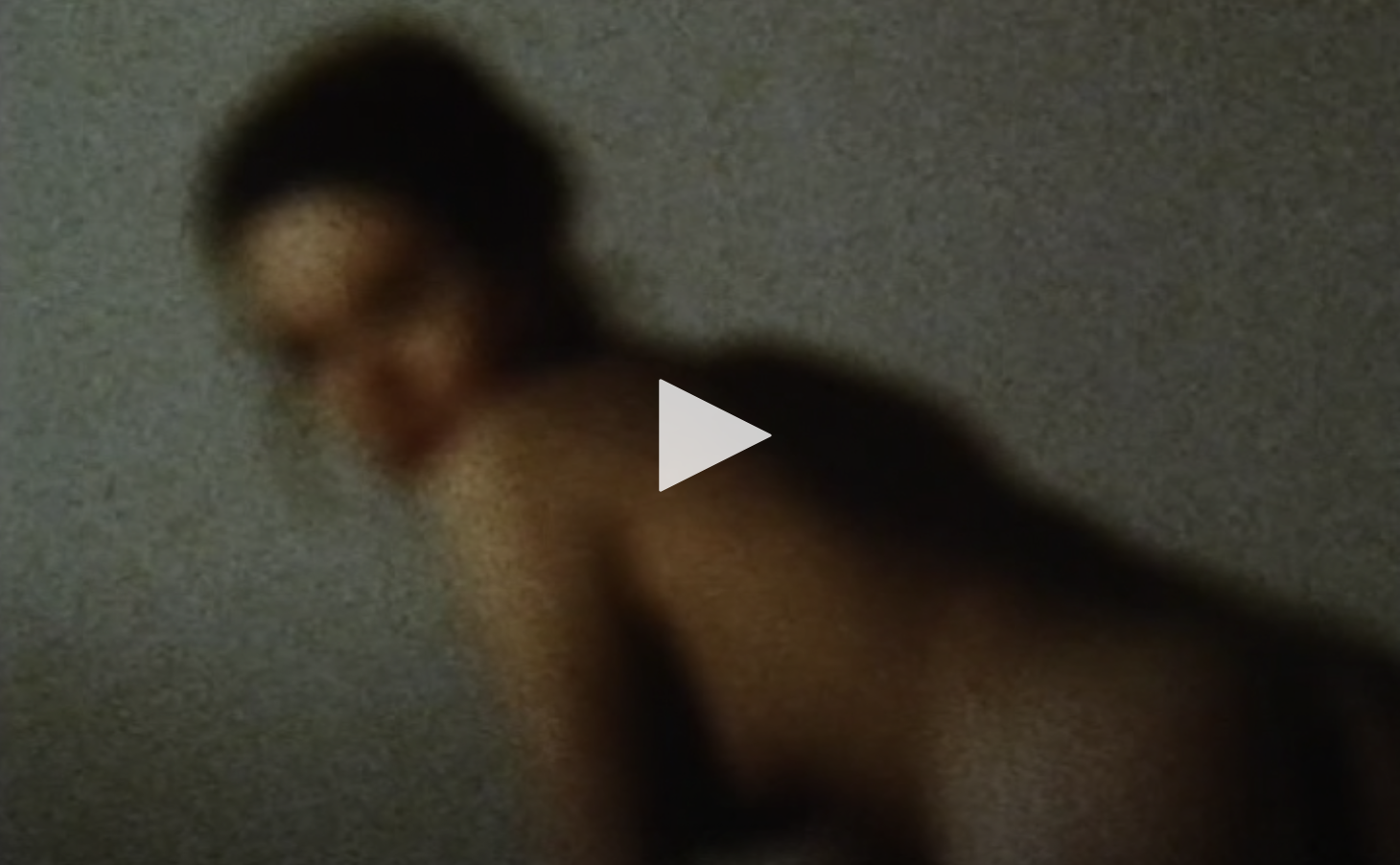
_____________
Happy-End (1996)
‘A found footage film about oral rituals, about festive occasions and about a married couple who understood how to enrich and enliven their cosy togetherness. We see the pair pouring drinks, cutting cakes, making toasts… Finally the exuberant movement of the dancing woman freezes. It is a deeply ambiguous moment that, from the expression on her face, allows one to think of something close to despair. On something like a modern, alienated, baroque vanity motive, which is still present in the Austrian tradition, and whose abrasion with the sensual certainty of the moment of drinking an egg liqueur gives Happy-End a wider meaning.’ — Bert Rebhandl

____________
Outer Space (1999)
‘In half-light and fractured, staggering visuals, a young woman enters into a suburban house at night. As the door closes behind her, both the physical space and the surface of the projection begin to splinter, collapse and rupture. Spaces enclose and enfold, the female subject multiples and shatters across the screen, and the film itself screeches and tears as the sprockets and optical soundtrack violently invade the fictional world. Any semblance of a cinematic narrative is overwhelmed and assaulted, leaving it scattered in a thousand shards amid an entirely unique cinematic language. This is Peter Tscherkassky’s Outer Space. It is the most recent work of a filmmaker at the forefront of avant-garde film practice. And in its sheer filmic materiality it may seem to be an anachronism in a time of hype about new technological modes. Yet, Tscherkassky, strictly working in film as he has done for over two decades, continues to employ celluloid as a singular material with which to investigate theories of subjectivity, memory and perception, as well as the aesthetic limits of the cinematographic image. Tscherkassky sculpts with time and space, rhythms and arrhythmia in a way that feels like an entirely new film space, a new language altogether.’ — Senses of Cinema
___________
L’Arivee (1999)
‘A white screen. Tabula rasa. Panavision. L’Arrivée shines on you like pure projected light, like the white surface still waiting for the marks of the filmmaker. In L’Arrivée, Peter Tscherkassky goes back to the beginning, back to lumière and the Lumières who, once upon a time, made a film of a train arriving. And then the dirt begins to invade, the “story”, if you like. A frenzy in the soundtrack – it bangs, creaks, crackles and roars. From the right a grey veil approaches: the perforation of a strip of film. L’Arrivée makes cinema from mistakes, from derailments. Half pictures – the misty pictures of a grey delegation in station somewhere – penetrate the white surface. From right and left they run together, crash into each other and strive to separate themselves again. The material comes from Mayerling (1968), a Habsburger melodrama from the British director Terence Young. The Eastman colour which was originally present has been exorcised by the filmmaker. What Tscherkassky does here is drastically re-configure in Cinemascope. A train arrives and collides with its mirror image. Events begin to turn head over heels. Tscherkassky hystericalises the images. He allows them to lose their certainty, crosses soundtrack with perforation strip, changes positive to negative, slits the material open. Inside out and upside down. Phantom images – behind the veil of a film still running amok as if in the grip of a panicking collaborative cinematographic machine. A filmstar staggers into the final kiss – Catherine Deneuve alights, a man (Omar Sharif – which sounds like j’arrive) hurries towards her. A kiss. Bliss. An end. L’Arrivée is a film in the process of approaching. An orchestrated melodrama of dislocated viewing values made with sheer pleasure in disaster.’ — Stefan Grissemann
___________
Get Ready (1999)
‘The official trailer of the International Film Festival Viennale ’99. Found footage from a feature film. From an idyllic scene at the sea Tscherkassky moves to a speedy car driving by night. The radical movement of objects, bodies and senses illustrates the power of cinema.’ — Viennale Catalogue 1999
____________
Dream Work (2002)
‘Austrian filmmaker Peter Tscherkassky works with found footage to create layered films that disturb our casual acceptance of those seemingly everyday tasks performed in cinematic stories. The simple act of walking into a room and drawing the shades can become a hallucinatory experience containing dread. The few films of his that I have seen create suspense from the ordinary. Sounds are repeated and magnified. Shots jitter and jump, repeating in a staccato nervousness that suggests confusion, hysteria, horror. Dream Work makes the connection between filmmaking and the unconscious obvious. It explodes scenes from a Hollywood movie to reveal the hidden dream forces contained by cinema itself. The rush of fluidly changing points of view reaches a crescendo and breaks down into sprocketed film strips and hands editing celluloid to make palpable the dream content of all films. Working with the material of dreams is what Tscherkassky seems to be doing.’ — Camouflage Lens
Teaser
_____________
Instructions for a Light & Sound Machine (2005)
‘The hero of Instructions for a Light and Sound Machine is easy to identify. Walking down the street unknowingly, he suddenly realizes that he is not only subject to the gruesome moods of several spectators but also at the mercy of the filmmaker. He defends himself heroically, but is condemned to the gallows, where he dies a filmic death through a tearing of the film itself. Our hero then descends into Hades, the realm of shades. Here, in the underground of cinematography, he encounters innumerable printing instructions, the means whereby the existence of every filmic image is made possible. In other words, our hero encounters the conditions of his own possibility, the conditions of his very existence as a filmic shade. Instructions for a Light and Sound Machine is an attempt to transform a Roman Western into a Greek tragedy.’ — Peter Tscherkassky
____________
Coming Attractions (2010)
‘Peter Tscherkassky’s Coming Attractions is a sly comedy that mines the relationship between early cinema and the avant-garde by way of advertising.’ — MUBI
Excerpt
____________
The Exquisite Corpus (2015)
‘It is with deceptive simplicity that Peter Tscherkassky embarks on his filmic voyage to regions of desire found in sexualized cinema: A naked couple from a 1960s nudist film climbs aboard a small sailboat, gliding over darkly tinged waters alongside a rocky coastline before stumbling on an isolated beach where a sleeping beauty lays. It takes nearly four minutes to arrive at this juncture, before Tscherkassky blows his fuses in characteristic style. Images begin to flicker and tremble, intermingling and superimposing, nervously shimmering between positive and negative, diving headlong into over-, under-, and multiple exposures, split screens and distortion effects. The title of The Exquisite Corpus not only refers to the Surrealist method of art making called Cadavre Exquis, but also tips its hat to the colloquial German term for a fine funeral or “schöne Leiche” – photochemical cinema is almost an anachronism in this day and age. Tscherkassky´s is a rigorously analog film, manually composed one frame at a time out of moments from disembodied feature films, amateur and porn flics, as well as fragments of discarded advertising rushes – magic from the garbage can of commercial film. Dirk Schaefer interweaves an original hypnotic melody with ambient sounds, dislocated motifs from legendary exotica composer Les Baxter, Musique concrète, manipulated voices and quotes from Teiji Ito´s famous score for Maya Deren´s Meshes of the Afternoon. A subversive humor seeps into Tscherkassky’s multifaceted use of visual styles and formal play, only heightening the gentle ecstasy of voyeuristic curiosity, desire and seduction fantasy the film invokes. The Exquisite Corpus is a trance film that cunningly magnetizes animal sensuousness, a wet daydream composed of faces, bodies, weavings – tactile and textile: it is an erotic simulation game.’ — Stefan Grissemann
Excerpt
_____________
Train Again (2021)
’18 years after Kurt Kren produced his third film 3/60 Bäume im Herbst [3/60 Trees in Autumn], he shot his masterpiece 37/78 Tree Again. 18 years after I created my third darkroom film L’Arrivée (an homage to the Lumière brothers and their 1895 L’Arrivée d’un train), I embarked on Train Again. This third film in my “Rushes Series” is an homage to Kurt Kren that simultaneously taps into a classic motif in film history. My darkroom ride took a few years, but we finally arrived: All aboard!’ — Peter Tscherkassky
Excerpt
*
p.s. Hey. I’m now in the desert staying at an AirBnB near the shooting location. We start shooting the film on Monday, and Zac and I and our crew are scrambling madly to get some last things (casting very small roles, finding the last few locations, etc.) in place this weekend. Things are good, but there are a lot of challenges. Like the main house location keeps throwing up obstacles, for instance its sewage system suddenly backed up into the house this week, and now none of the bathrooms will be functioning during the shoot, which is obviously pretty challenging. But on the creative side, things are great, and we’re excited. And exhausted. This p.s. will be pretty rushed and not great as a result, and I apologise of that. Today’s post will be the last normal post + p.s. for the next month. I’m just going to be too crazy swamped with the filmmaking to do the blog in the usual way or even in this weekly way. What I’ll be doing is posting photos from the set and shooting here as often as I can, but I won’t be to interact with you via the p.s. again until after the shoot ends, meaning sometime shortly after April 20th. I’ll give you an update on when exactly the blog will normalise again. ** Nick., Hi! Glad you snapped out of that. You sound good. Gay to me? I honestly never think about it and never have. I’m not very into categorising people or things ideally or myself. I don’t know why, but I find that kind of too preemptively restrictive or something. But I’m 100% cool with anyone thinking that way. Weird, rushed answer, sorry, but I’m pretty zonked out. I haven’t had time Ito input anything really, and, music-wise, just stuff people have been playing the car as we shuttle around the desert, things like Silver Jews and a lot of indie 90s stuff and not much else. Godspeed You Black Emperor are playing out here the night before we start shooting, so everyone’s going to that to celebrate/kick off. Take good care, and see you at the other end. ** David Ehrenstein, Me too. I used be pretty friendly with her, and she’s awesome. ** Michael F, Hi, Michael. Coincidences are so interesting. Well, in your/this case at least. Thanks for coming in. ** ellie, Hi! The Var song is ‘Pictures of Today / Victorial’. Some of ‘The Missing Men’ is in my selected poems book ‘The Dream Police’. I think there are a bunch of poems and things in there that have gotten lost. You and Kenji are more than welcome to whatever you want. I hope your week, well, month ahead is really great. I look forward to talking you when not in a rush again. ** Kettering, Hi. That was a fascinating take on the prolapse. I’m going to give it more deserved time as soon as my brain has any space. You’re an archaeologist! I wanted to be an archaeologist when I was a kid. I spent a summer in Peru helping people work on a site and decided it was too hard and slow for me. The Prix Sade prize is a handmade artwork thing. I honestly don’t have any idea who made the prize/sculpture I got. Take care. ** _Black_Acrylic, Hi, Ben. Me too: I recommend the Nan Goldin doc. It’s excellent. So concise but so full. Pretty amazing. ** Sofia Ajram, Very nice to meet you, and thanks for the kind words. The anthology sounds really interesting. Honestly, it’s hard for me to say if I can at the moment because I”m just about to shoot a film for the next month and then spend the summer editing. I’ll know if I have any time better at the end of April. If that’s not too late, we can check in again then. I really appreciate you asking. I’d like to contribute if I can. Have a good month. ** Chris KELSO, Hi, Chris! I’m well, at least physically, ha ha. I’ll look for the Monson book once I’m out of the filmmaking woods. I don’t know anything about the Kenji book, so I guess not in it. Thank you for the package. I’m in LA for a while, but hopefully my roommate in Paris will keep it safe until I return. Take good care, man. ** shadeoutmapes(billie?)🏃♂️, Hi! I’m kind of exhausted and stuff, but I’m okay. You’re back in school! Awesome! How is that so far? Really, really happy for you! I think she’s in the Suicidal Tendencies video, yeah? At that rate, you might be finished with your novel by the next time I see you. Excited to see where you are. Sure, I love Slint. I haven’t listened to them in ages for no good reason, but yeah. Awesome walk story. Better than I could have imagined. Take really good care while I’m off in film land, and please check in with your latest when you want. I’ll be checking in to read comments even if I can’t respond them for a while. ** Jasmine Johnson, Hi, Jasmine! Welcome! Thank you! I’m honored. I’ve heard of Factory Made. I think a friend or two of mine died something there. So I’m even more honored to meet you. Unfortunately, I’ll be out in Yucca Valley shooting a film on the 31st, so I can’t be there, but I wish I could. Thank you for wanting me. I hope I’ll get to talk with you more in the not so distant future. ** Brendan, Hi, Brendan! Thank you so, so much about you know what! ** Steve Erickson, Yikes, man, I sure hope your health starts treating infinitely better as of the soonest possible moment. Everyone, Mr. Erickson has some new reviews by him for you to luxuriate in. He talks about Vasilis Katsoupis’ INSIDE here, and a Beth B retrospective here. Your album will be out here by the next time I see you. Looking, obviously, forward. Yes, we’ll have heat lamps, etc. During the roughly ten days when we shoot almost all night we just have to try to adjust our sleeping schedules to sleep during the day. I have a really strict early to bed, early to rise sleeping routine, so that’s going to be very hard for me, but there’s no choice. ** Jamie, Hi, Jamie! I”m burnt and kind of crazed but okay enough under the circumstances. Belated happy 50th! The fifties are actually kind of not bad, so don’t worry. No sand in your shoes for the next month love, Dennis. ** James, Hi, James! Thank you! I’ll get to look at it in a month or so. We start shooting on Monday, so we’ll see. It’ll be exciting, and there will undoubtedly be plenty of problems, but hey. ** Robert, Hi, R. Oh, man, enjoy Dollywood. I’ve never been in that vicinity, but one of these years. Ha ha, you might want to pack some vegan lunches. And dinners. But, hey, you never know. Enjoy maximally! ** Dominik, Hi!!!! Things were crazy in LA, and they’re just as crazy out here in the desert, just differently. Right now it’s cloudy and a bit rainy off and on, which is bad for our purposes. Well, the cloudy is ok. But we’re hoping/praying it gets sunny again by Monday when we start shooting. It isn’t horribly freezing but when the sky dries up, the nights will get a lot colder. Nothing’s perfect. Fingers very crossed about Vienna. Hopefully you’ll be Viennese old timers by the time I get to talk with you again. New SCAB! Whoa! Awesome. I’ll dig in when I’m killing time between set ups for the scenes, if we have decent internet on set, which is … not very likely in the middle of the desert. But I can’t wait! Everyone, the new issue of Dominik’s ultra-key and crucial and imperative zine SCAB is now yours to peruse. I’ve only glanced at it, but it looks incredible. Please use your free time wisely by poring over it. SCAB #12 is here. The two figures in the middle of the storyboard are two of the main characters. One is Andre, the son, and the other is his friend/ imaginary boyfriend/ brother Extra. (It’ll all make sense when you see the film). I’ll need that love, thank you!!!! Love organising an absolutely massive ticker tape parade to welcome you to your new Viennese home, G. See you soon-ish! xo ** ANGUSRAZE3E3E3, Hey there! Good to see you! Wow. Mark Leckey! He’s a very cool artist, and that’s amazing that you’re collaborating with him. Seriously, that’s really fucking awesome. And obviously the Warp possibility is a seriously fingers-strangling-crossed situation. You’re doing awfully well, my ultra-talented chum. Other than one song that we already chose, our film has no songs or music in it, just noises. But thank you! Love back to you. I’ll be back in Paris in late April, so let me know if you’re coming through. ** Cody Goodnight, Hi Cody. I’m a bit crazy busy nuts at the moment but good. ‘Chelsea Girls’ is one of the great films, so, yeah. Nice that you think you’ve figured out your best skill sets. We should work together someday. Mexican food is my favorite food. It’s mostly where I get it, not so much what, although I’m a vegetarian so that limits stuff. Cheese Gorditas is a big fave. Really, really good art input you’ve got going on there. As usual of late, I haven’t had time to input anything. I do look forward to being a passive consumer again. You take good care, and I look forward to talking with you after the marathon shooting is history. ** Misanthrope, Hi, G. Things are well with expected last minute messes and potential disasters, but hopefully we’re on our way. I don’t know that dinosaur movie, but I don’t know much of anything at the moment. Have a great next month, George, and see you on the other side. ** Jeff J, Hey, Jeff! I have read ‘Swimming Underground’, but ages ago. Zac and I are super excited to start shooting on Monday. Right now we’re trying to fill in the remaining blanks — a few locations, casting the last of the small roles and extras, finishing the shot list, and etc. Pretty intense trying to get things in place, but we’ll be ready. Man, well, let’s just say I’m very happy you’ve figured out that mysterious pain onset and fixed it. May the upward slope to the old/new you be a quickie. Fantastic news about the Bookworm/Song Cave thing. Years ago Michael told me McSweeneys was going to put out a book of selected Bookworm interviews but I don’t know whatever happened with that. I look forward to talking w/ you a lot more once the film is in the symbolic can. ** All right. You have the awesome work of Peter Tscherkassky to investigate until further notice. I’ll pop in here to show some photographic evidence of the film shoot whenever I can, and I’ll be back in this form in a month or so. I’lll give you a heads up just before the official return. Have a great, safe time, everybody! Love, me.


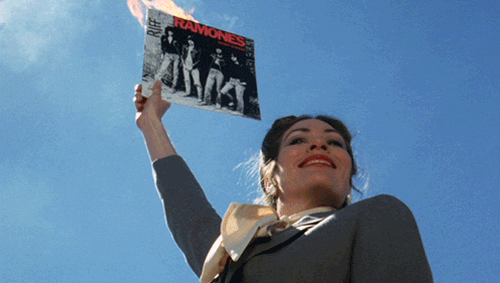
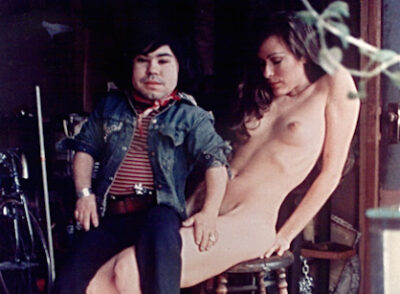

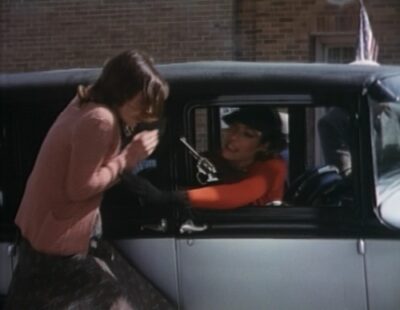

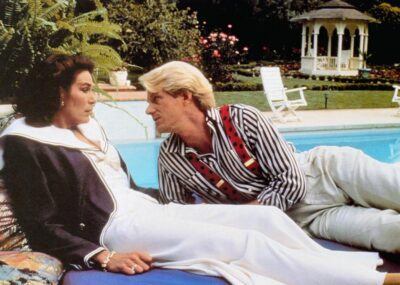

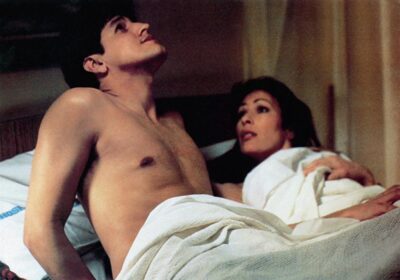
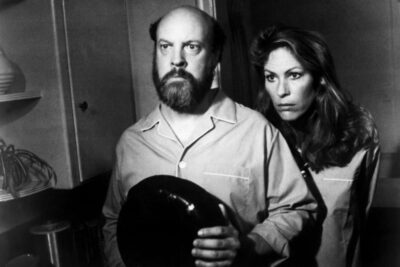
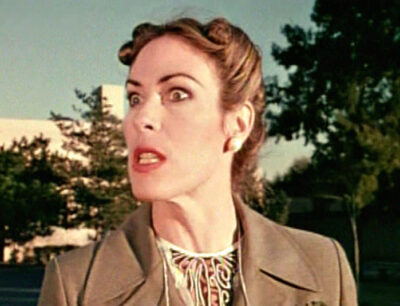
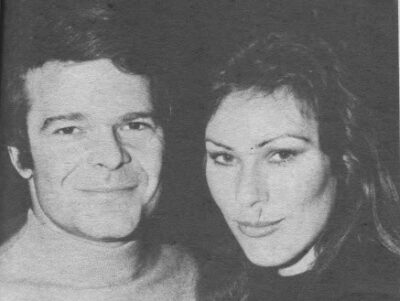
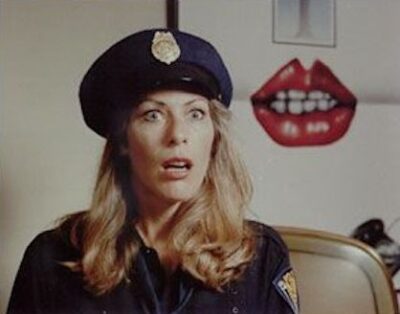
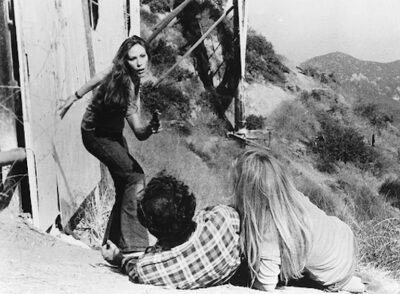


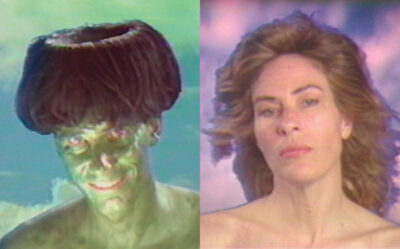


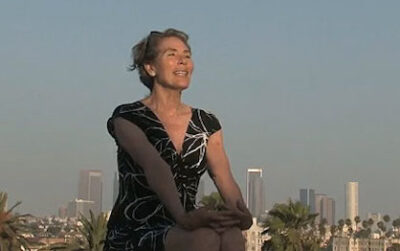
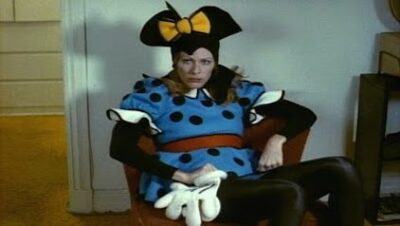

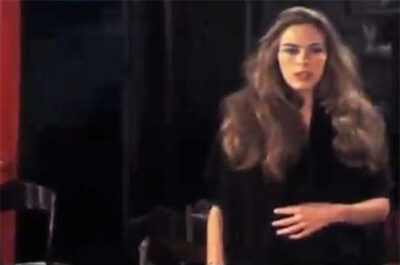
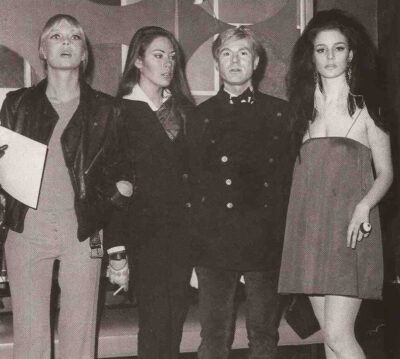

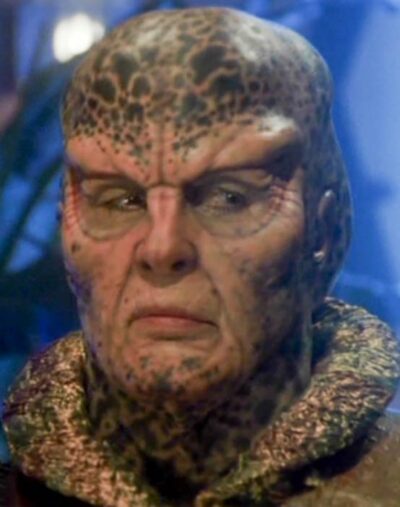
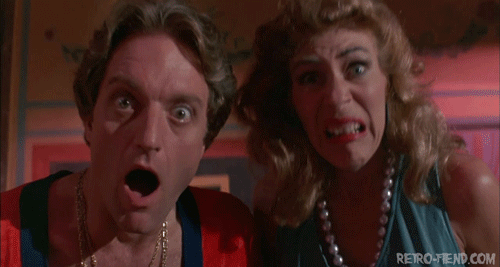
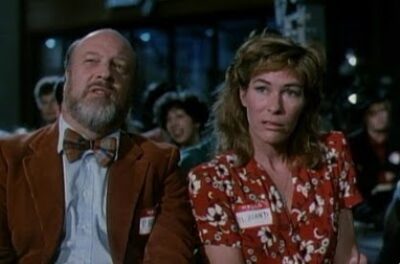
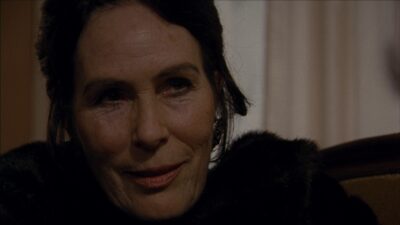
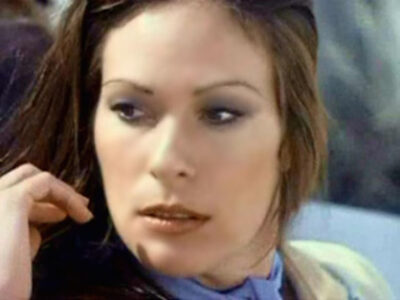
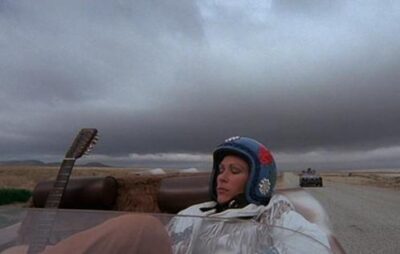
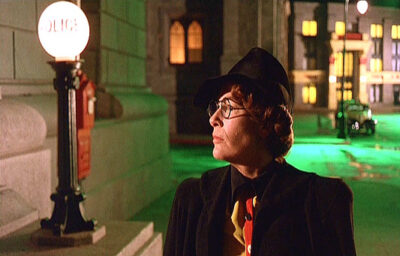
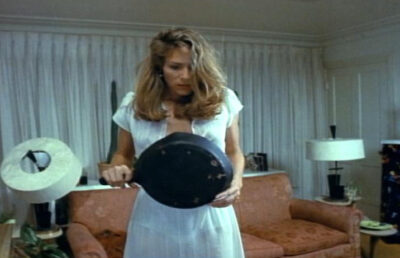
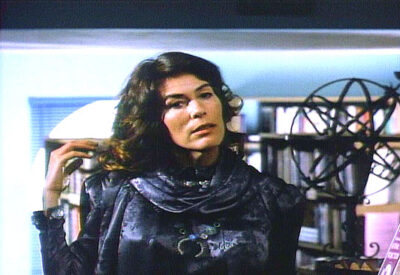
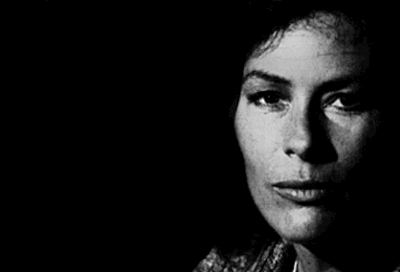

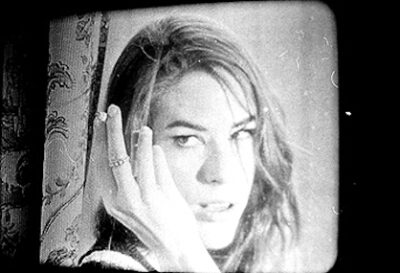
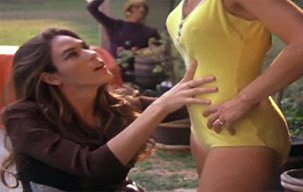
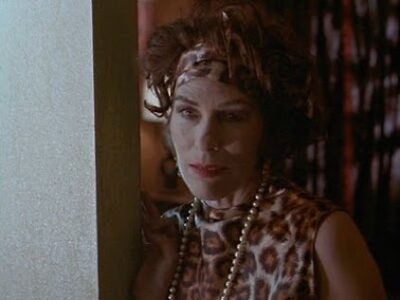

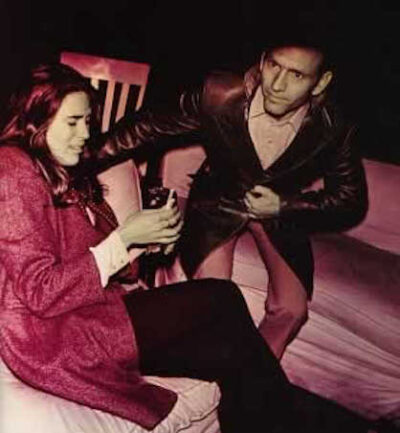
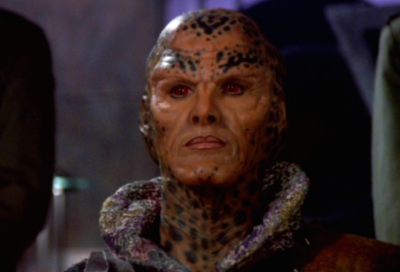
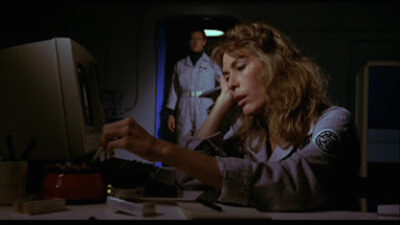
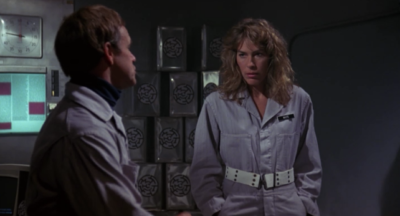

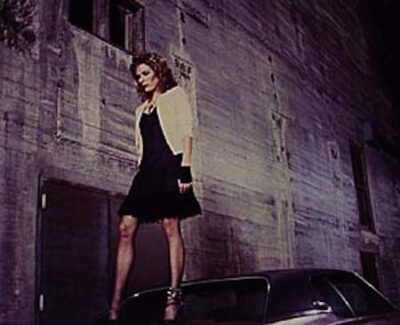


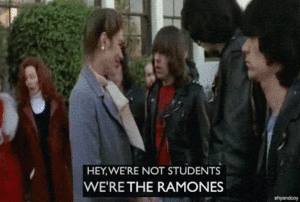
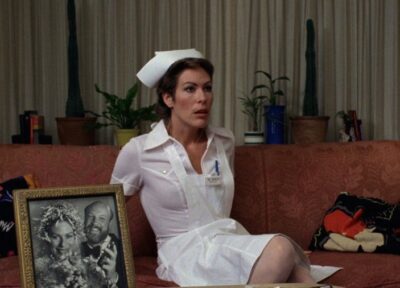

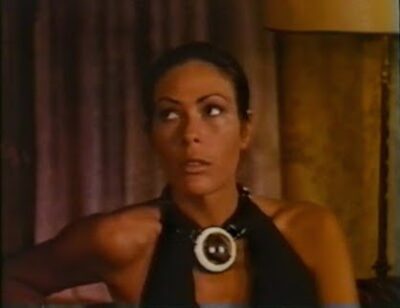
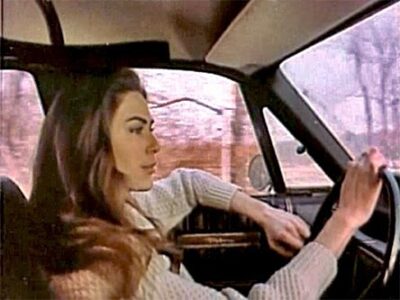

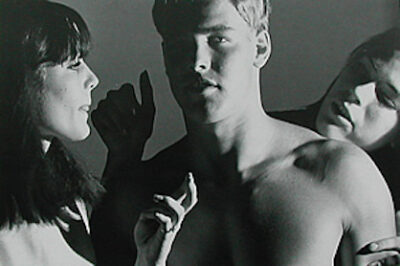

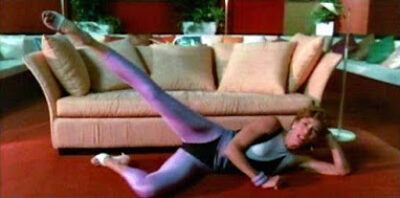
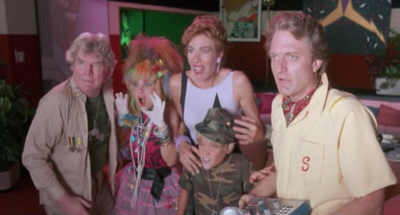
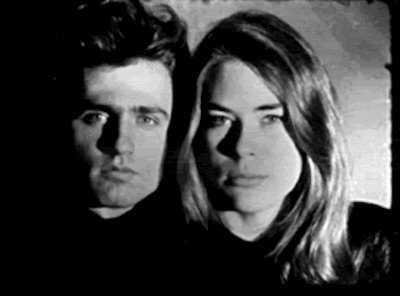
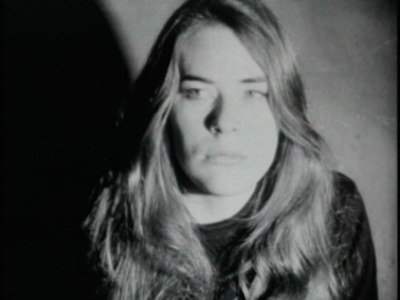
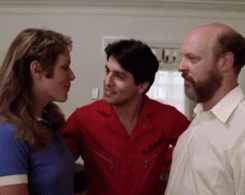
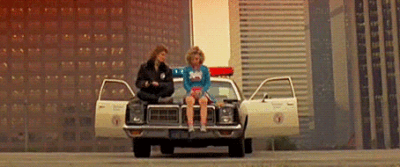
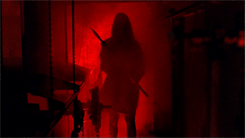


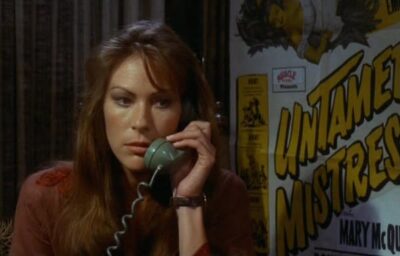
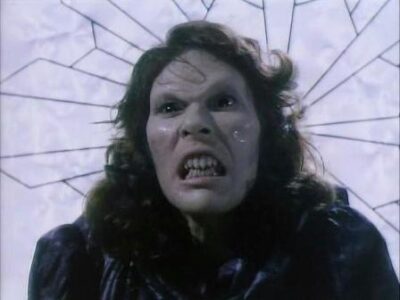
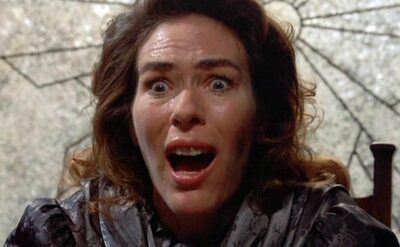

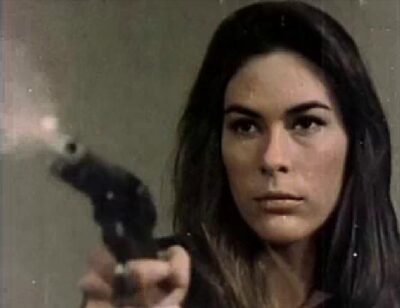
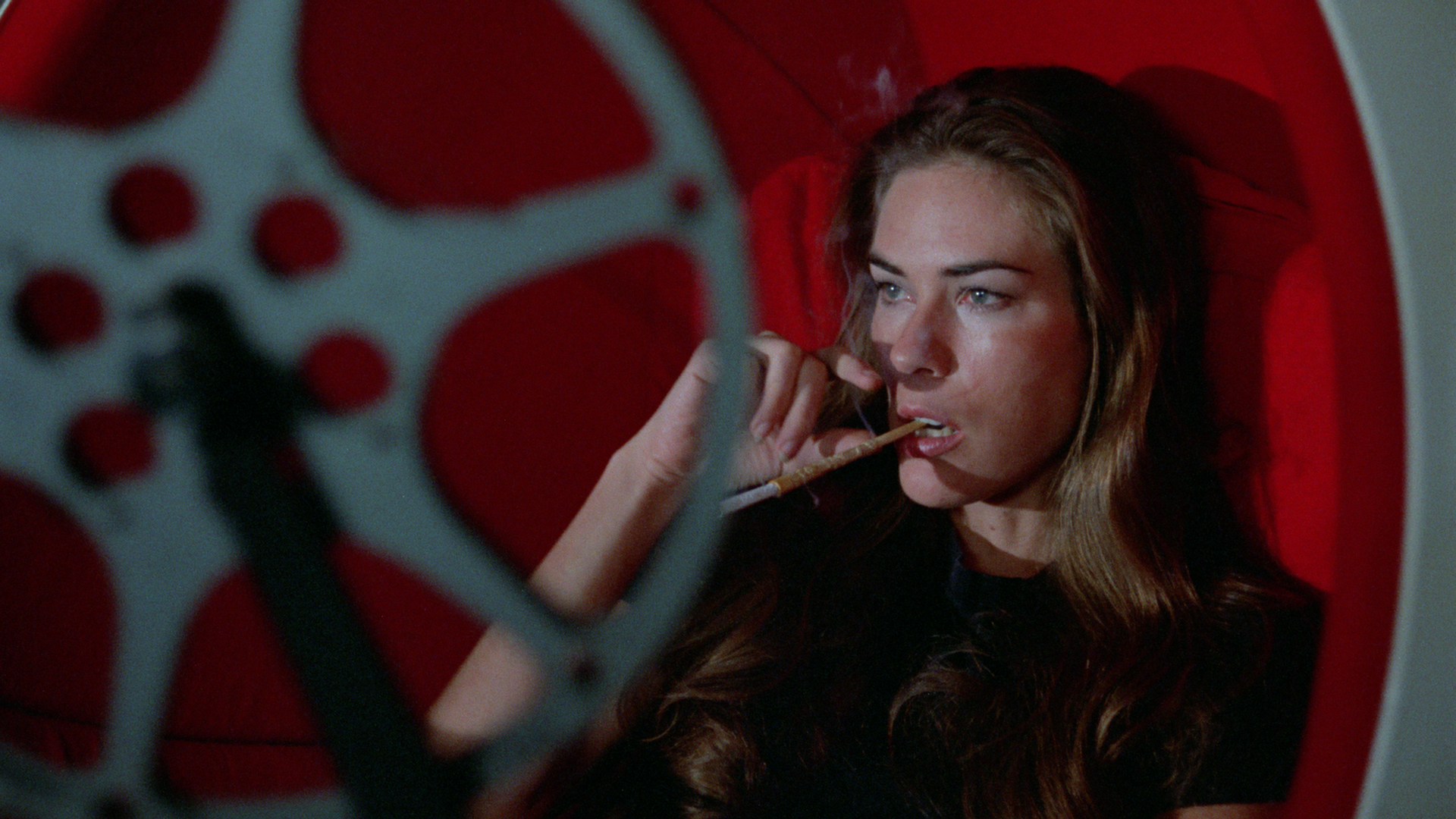
 Excerpt: Swimming Underground: My Years In The Warhol Factory
Excerpt: Swimming Underground: My Years In The Warhol Factory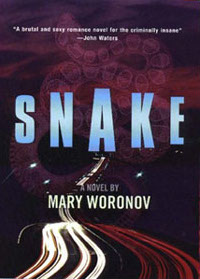 Excerpt: Snake
Excerpt: Snake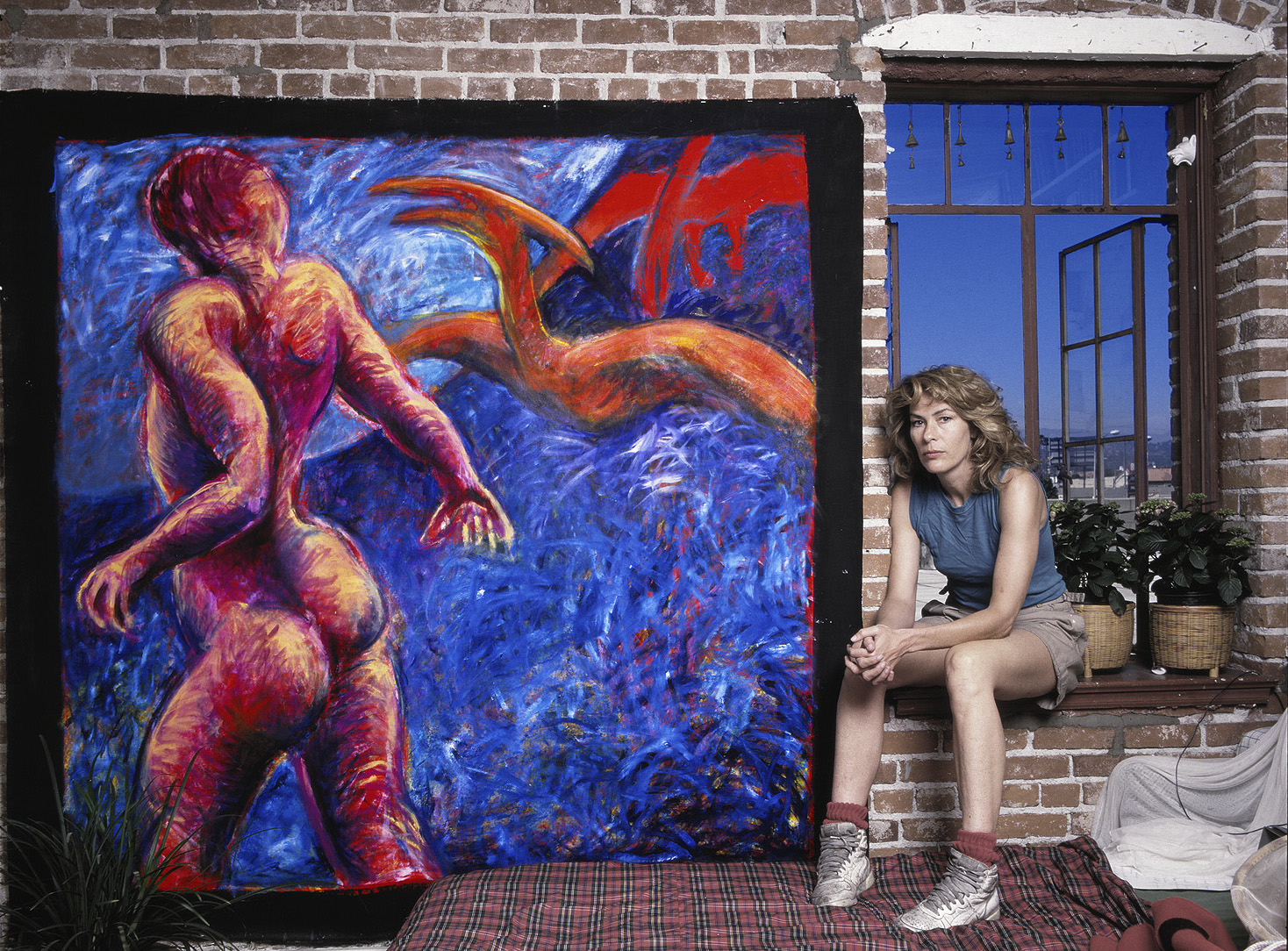
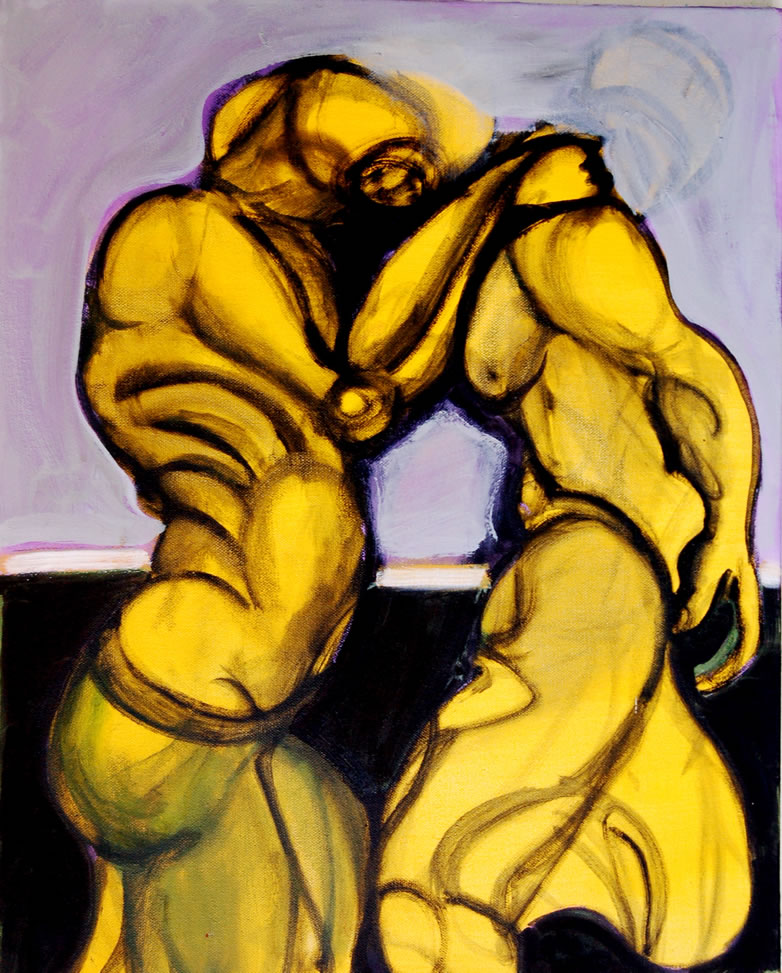
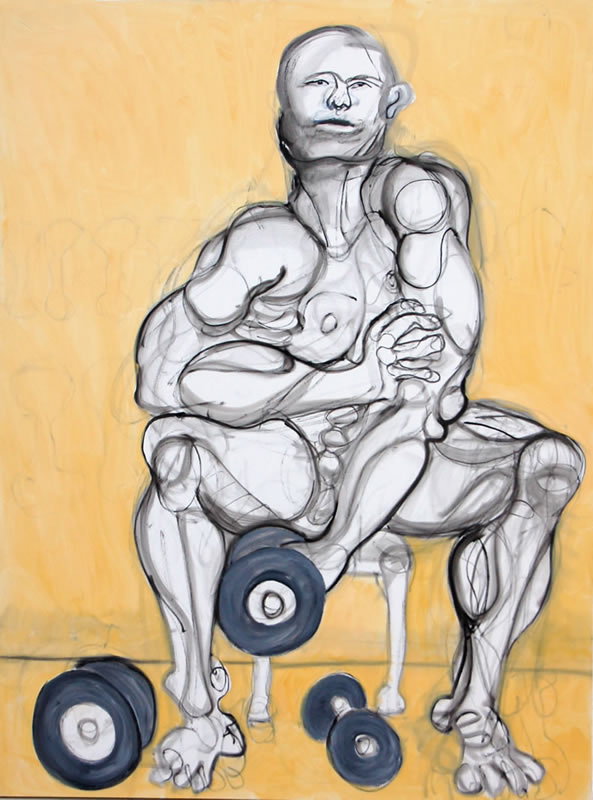
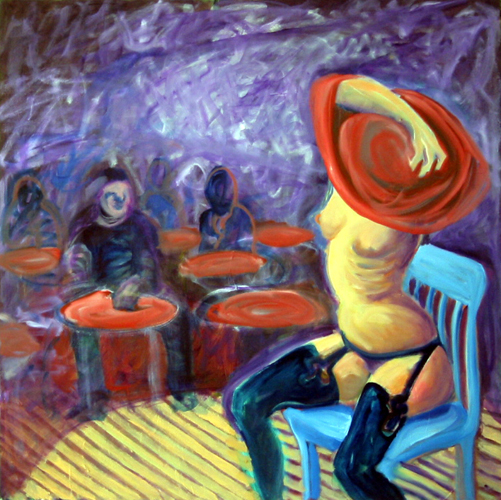
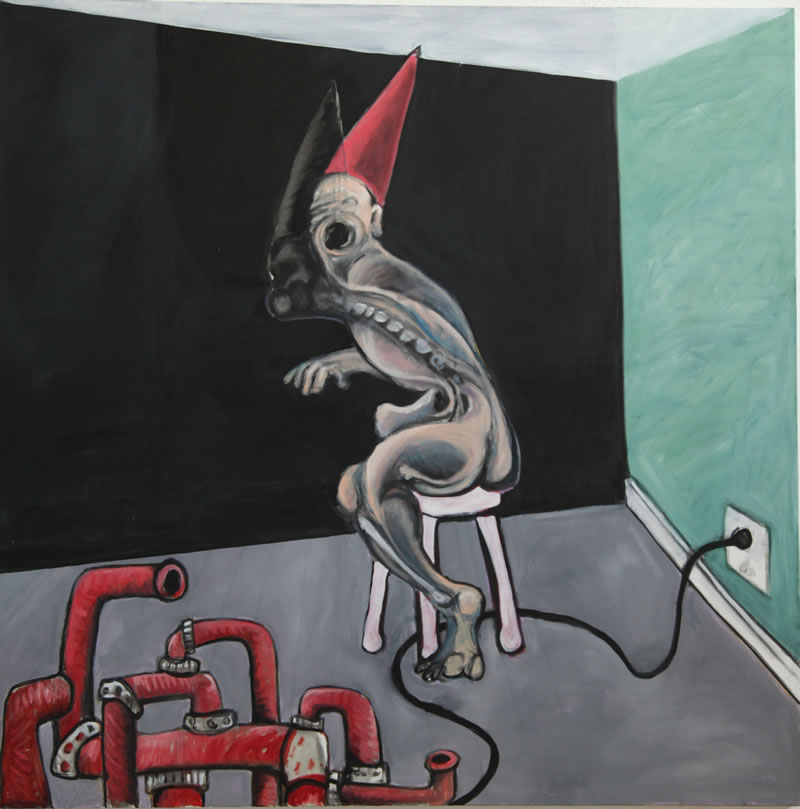
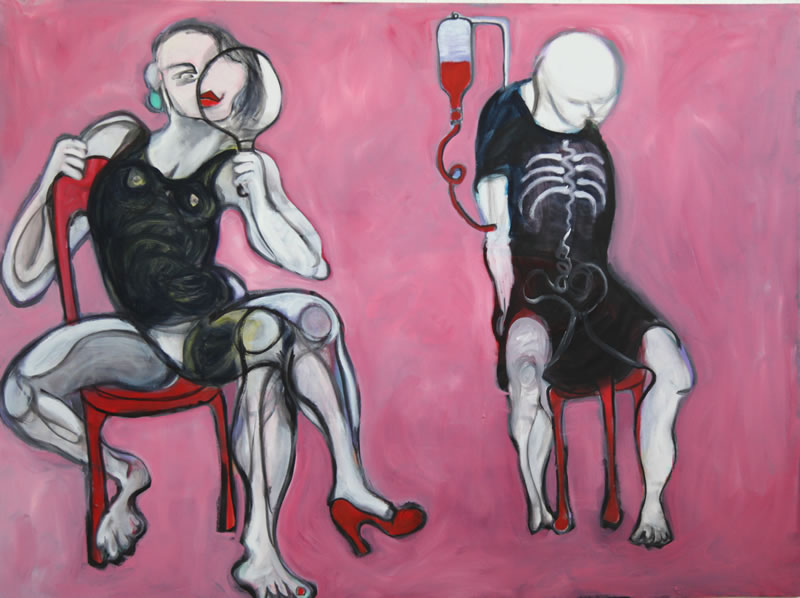


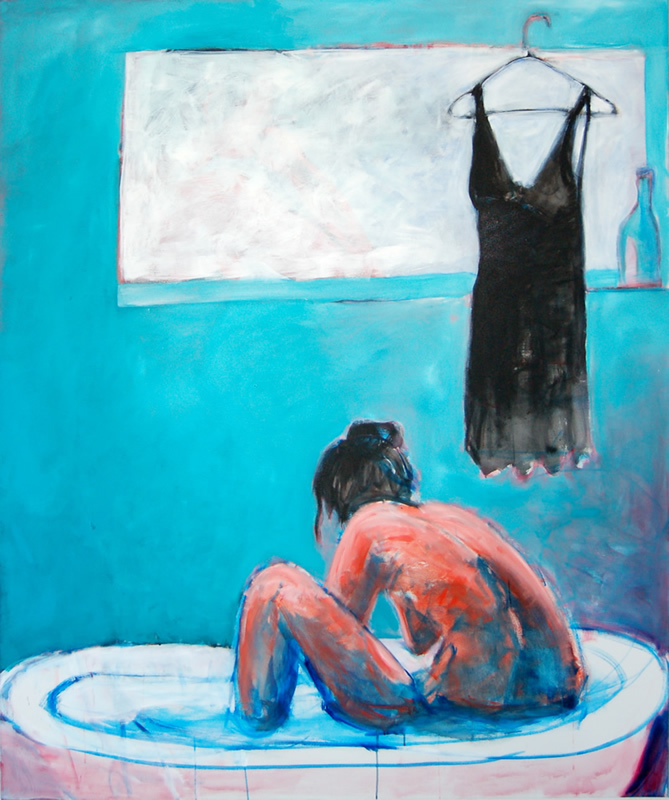


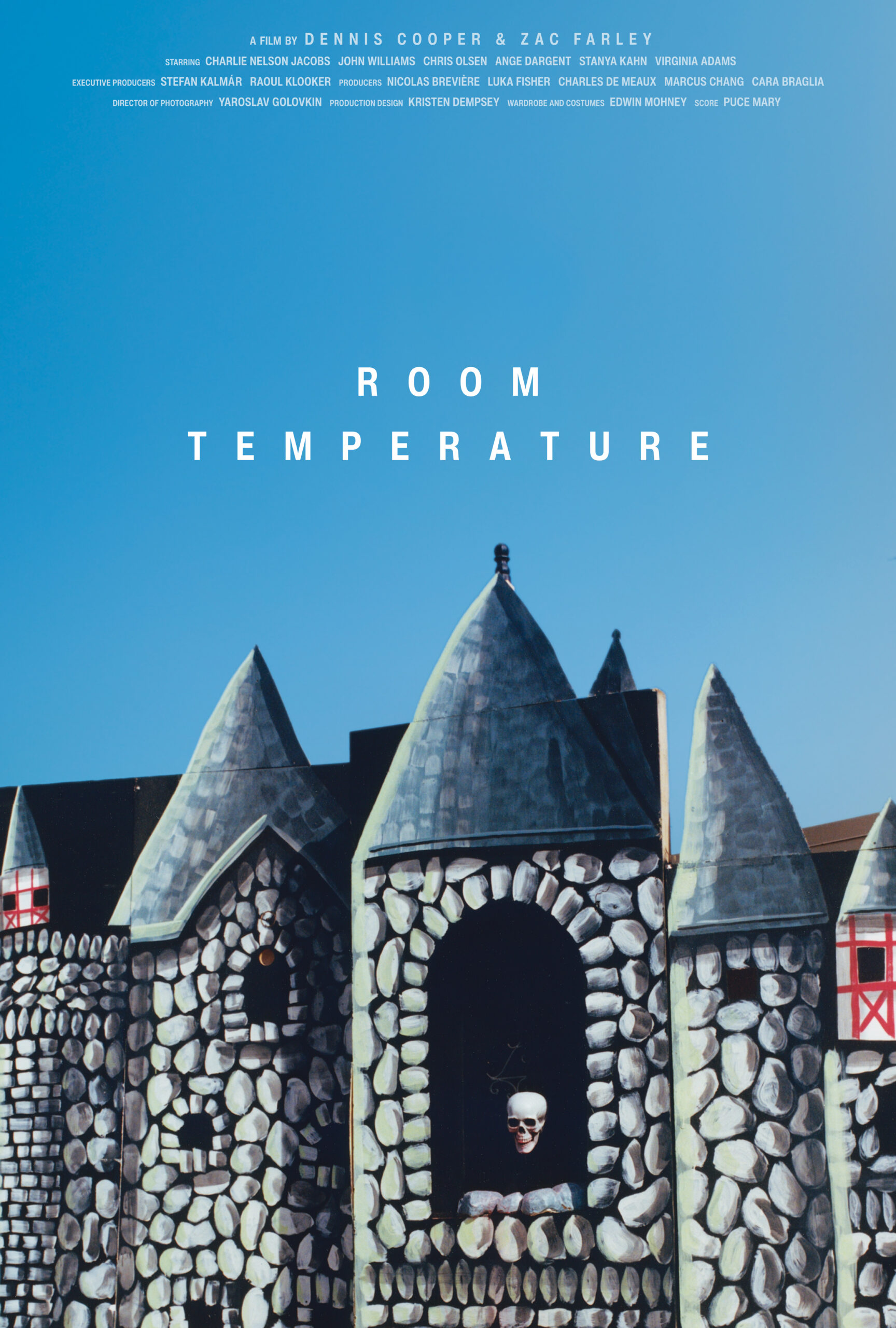



 Now available in North America
Now available in North America 